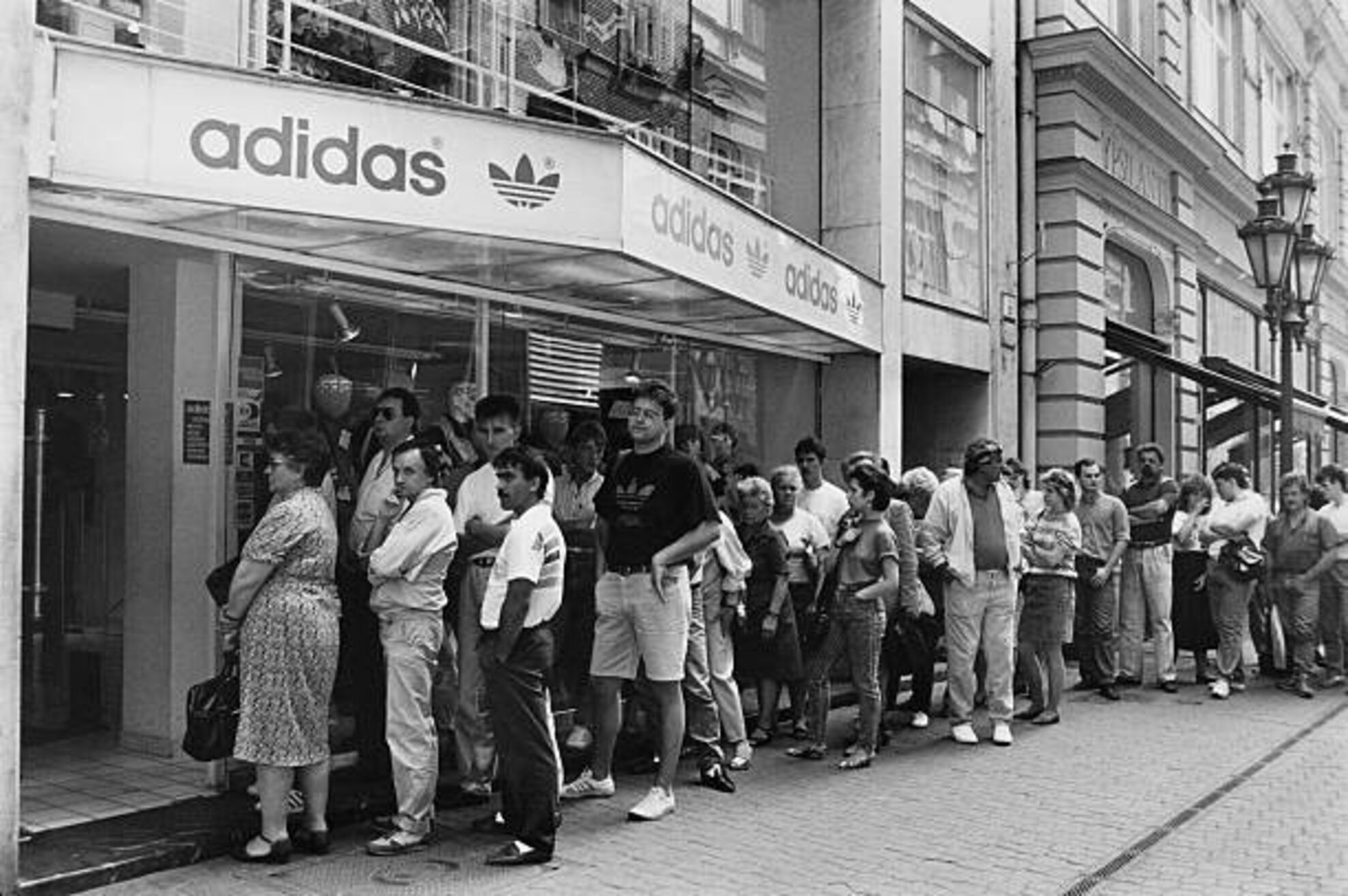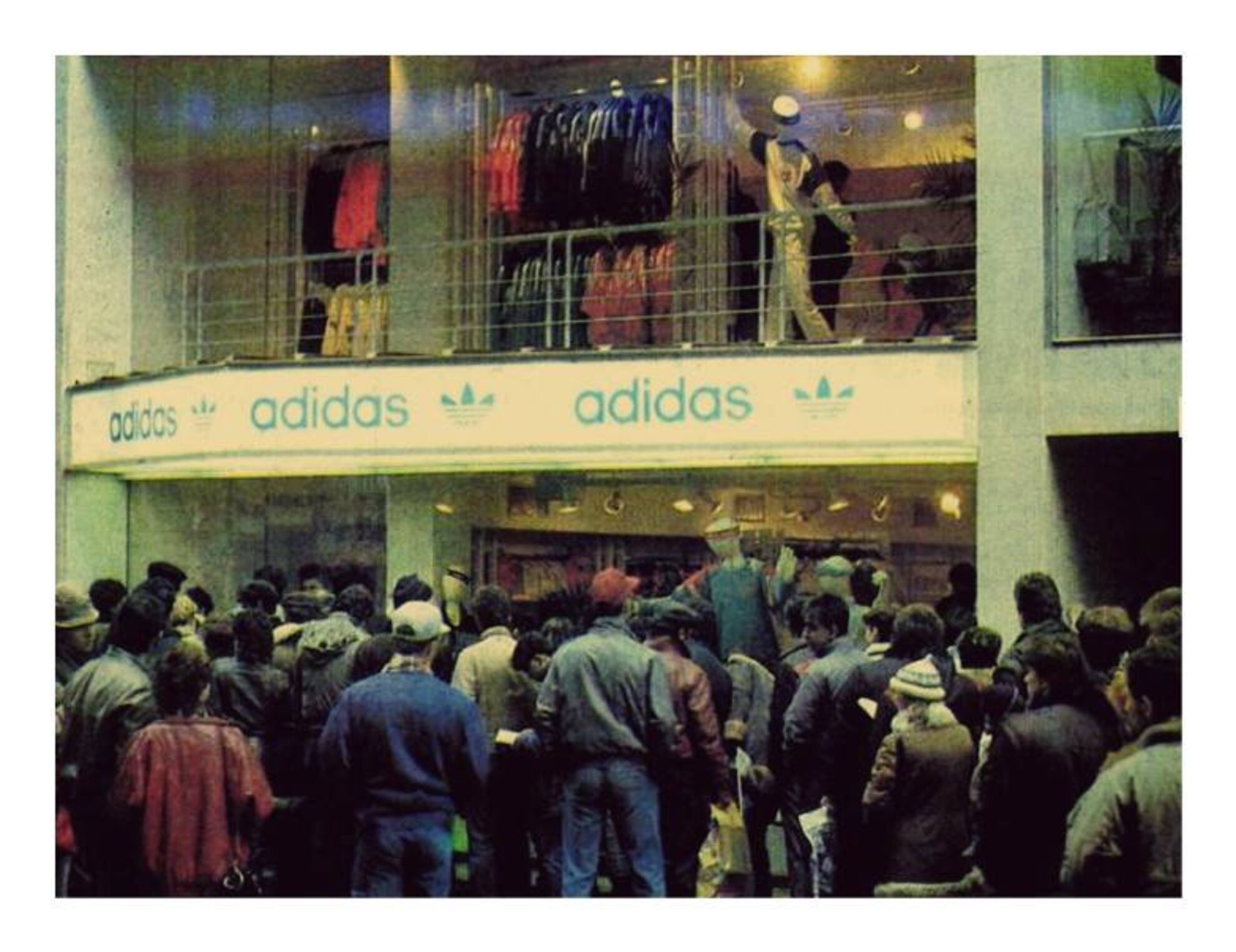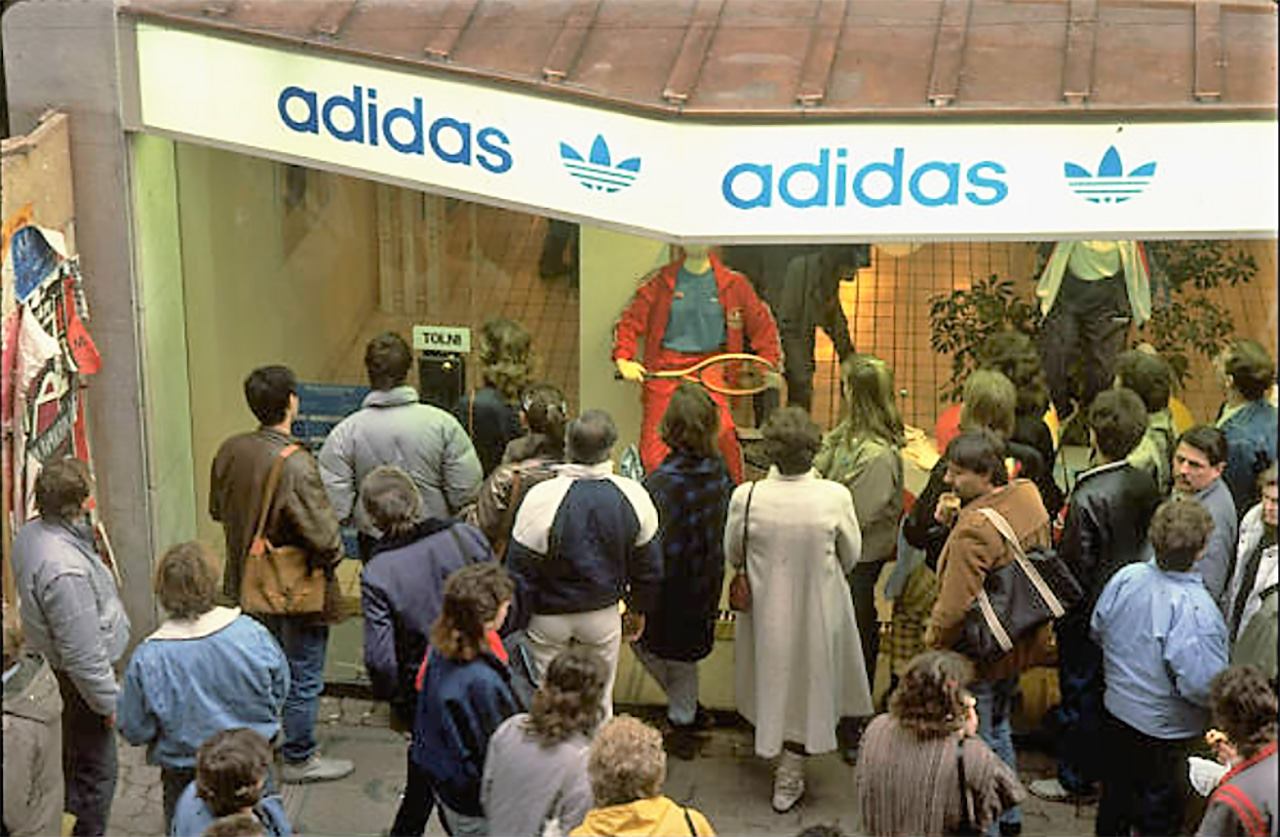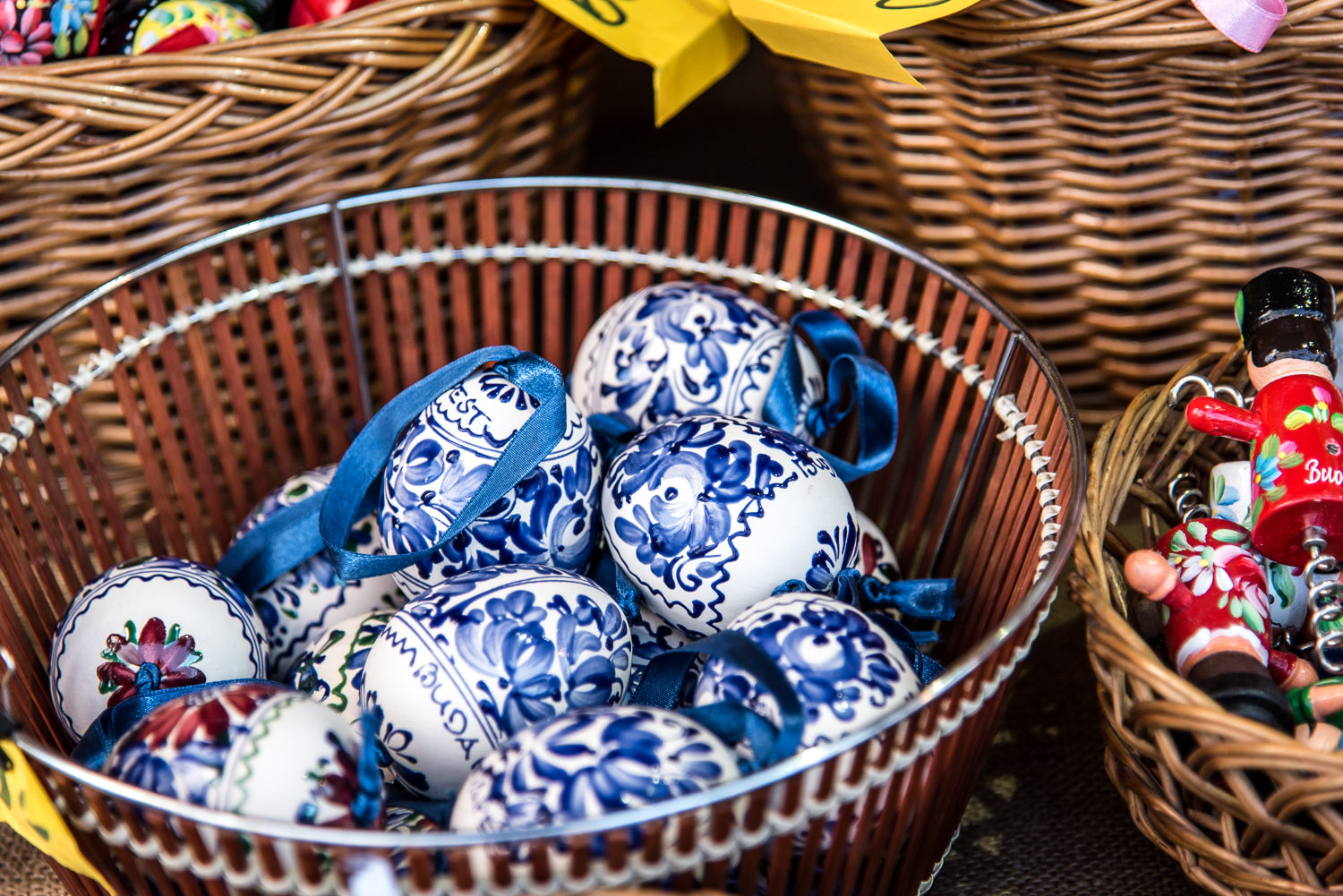Before the store opened, there were three ways Hungarians could slip their feet into the forbidden sports shoe seen on TV screens here during World Cups and Olympics.

One option was Vienna, another Yugoslavia, where Western products, including adidas, were sold. The third was inland: Tisza, a shoe factory in Martfű, was the Magyar copy which would later gain fashion kudos when revived as retro chic.

Adidas had opened at the former Budapest Fashion Salon, and those hoping that queues would disappear the next day were mistaken. For years, it was often more difficult to get into the store than Parliament. The grand opening saw Horst Dassler, son of founder Adi Dassler, who lent the brand its name, give a speech and cut the tape.
Many would go not to shop, but to marvel at this fashionable invasion by the West. What quality! It is even said that some shoes, T-shirts and rucksacks from this era still hold together.

Other things were less solid, however. At the time, few would have speculated that the store would be the harbinger of an ever-softening system falling apart. The West slowly crept in by stealth and commerce.

Today, no-one is quite sure of the prices for adidas goods back in 1987. We know that someone bought an adidas tracksuit for 1,600 forints in 1989, but the most popular items were the shoes, sold for 3,000 and 8,000 forints. Some worked all summer just to buy a pair.
Since then, a lot of water has flowed under Chain Bridge, but to get a taste of what the West meant to Magyar teenagers, here’s an excerpt from the 1988 documentary Young Hungarians, produced by the BBC’s Nick Thorpe. One scene was filmed at the shop itself.




